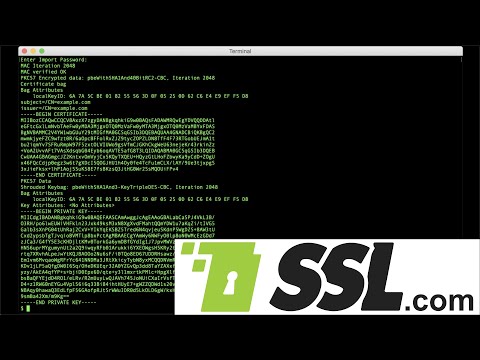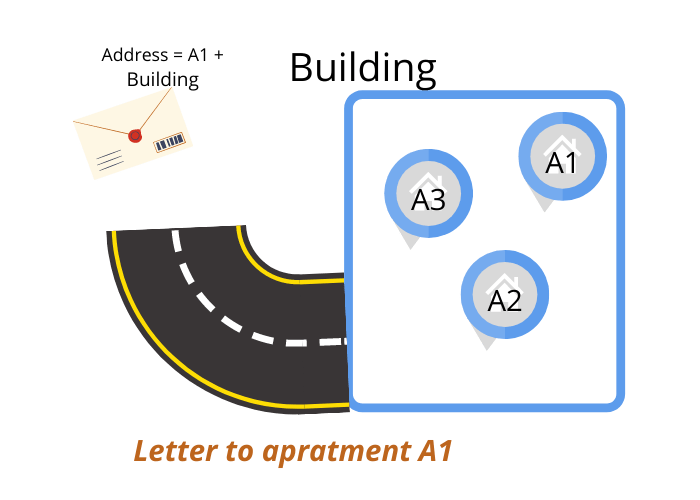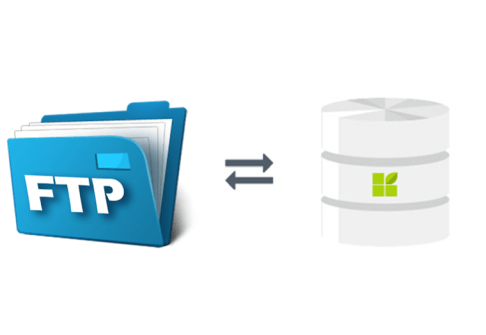
A webserver is a computer which stores files for a website (such as HTML, images, or CSS stylesheets). The server then delivers these files to a user's browser, per request, using HTTP technology.
A typical Web server is comprised of hardware components and software. Hardware includes a computer server and a device for storing data, like a hard disk. The software component includes a set of components that control how the hosted content is delivered.
There are two types of web servers: static and dynamic. Static web servers send the hosted files as they are, while dynamic web servers update the hosted files when a client requests them from the server's database.
Google has built a lot of its own servers. The company's director for engineering, Ben Jai, said the company uses a completely different approach to infrastructure in data centers than most other companies. Google, for example, doesn't use giant machines in its data centres to power them. Instead it uses batteries which kick in quickly and automatically in the event of an outage.

Google's battery design helps it reduce its energy cost, he explained. The company also uses a Power Usage Effectiveness system (PUE) that calculates the PUE every 30 second. This allows engineers develop a prediction model which predicts and adapts cooling in order for energy to be conserved.
Google has also found ways to save energy through its "defense-in depth" strategy. This includes the use of industry standard firewalls, lists for access control, and other security tools that protect Google's network from malicious behavior. These measures were designed to detect, correct and prevent destabilizing incidents and to slow down possible attacks before they caused critical problems.
In the event of an attack, its servers are protected by proprietary systems which monitor binary modifications. They then return them to a standard non-modified condition. These automated self-healing systems are an important part of Google’s efforts to secure its networks.
In addition, Google's computers are protected by a suite of software that constantly monitors them for suspicious activity and reports it to the company's security teams. Google's servers are protected from outside hackers by this software.
Google's computer systems are protected with specialized hardware. This helps identify memory leaks, and other problems which could lead to a system failure. These devices use magnetoresistive sensors to measure how much of a computer's memory is exposed and to re-load that memory when necessary.

Google's own internal internet, which spans forty data centers in 40 countries, is largely based on proprietary custom-built software, such as a top-secret distributed-file system called GFS. Another tool, the platform Spanner (which replicates data between data centers to deal with traffic issues or hardware failures), allows Google to quickly move data among data centers.
According to Google's own numbers, 1.8 billion active users rely on the search giant for at least 27 petabytes of storage. It's enough storage to hold all of Google's user data, including documents, photos and more.
FAQ
How much do web developers make?
You can expect to make between $60-$80 an hour working on your own website. Independent contractors are a better option if your goal is to charge more. It is possible to charge between $150-200 an hour.
WordPress is a CMS.
Yes. It's a Content Management System (CMS). A CMS allows you to manage your website content from within a web browser instead of using an application such as Dreamweaver or Frontpage.
WordPress is completely free! You don't have to pay for anything other than hosting, which your ISP usually provides.
WordPress was initially created as a blogging platform, but it now offers many other options such as eCommerce sites, forums and membership websites. Portfolios are also available.
WordPress is easy and quick to install. You must download the installation file from their website and upload it onto your server. After that, you can simply access your domain name with your web browser.
After installing WordPress, you'll need to register for a username and password. Once you've logged in, you'll see a dashboard where you can access all of your settings.
This is where you can add pages or posts, images and links to them. This step may be skipped if you feel confident editing and creating content.
You can also hire a professional web design firm to help you with the whole process.
What is Website Design Software?
Website design software is used by graphic artists, photographers, illustrators, writers, and others involved in visual media to create webpages and other digital materials.
There are two types main website design software options: desktop apps and cloud-based. Desktop apps can be installed on your local computer. They also require that you install additional software. Cloud-based applications are hosted on the internet. This makes them great for mobile users.
Desktop Applications
While desktop applications have more features than cloud-based options, they're not always needed. Some people prefer to only use a desktop program because it is easier and more convenient. Others like to use the same tool regardless of whether they are working on a laptop or a smartphone.
Cloud-Based Solutions
Web designers who wish to save time or money should consider a cloud-based option. These services let you edit any type or document anywhere you have an internet connection. You can use your tablet to work while you wait for your coffee brew.
If you decide to use a cloud service, you will still need a license. You won't need to purchase additional licenses if you upgrade to a later version.
These programs can be used to create web pages, if you have Photoshop, InDesign or Illustrator.
How much does it cost to build a website?
The answer to this question depends on what you want to accomplish with your website. Google Sites, for example, might not be necessary if you are merely looking to share information about your business or yourself.
But if your goal is to attract visitors to a website, it's likely that you'll need to invest in something more robust.
The best option is to use a Content Management System, such as WordPress. These programs let you create a website with no programming skills. These sites are hosted by third-party companies so you don't have to worry about being hacked.
Squarespace is another way to create a website. Squarespace offers a variety plans that range from $5 per person to $100 per person, depending on what information you want to include.
What is a website static?
A static website contains all content stored on a server that visitors can access via web browsers.
The term "static", as it is sometimes called, refers not to dynamic features such changing images, videos, animations, etc.
This type of website was originally created for use in corporate intranets. It has since been adopted both by individuals and small companies who are looking for simple websites that do not require any programming.
Static websites are becoming more popular due to their ease of maintenance. They're easier to update and maintain when compared to a fully-featured website with many different components (such as blogs).
They also load more quickly than dynamic counterparts. This makes them ideal for users on mobile devices or those with slow Internet connections.
Also, static websites are more secure that dynamic counterparts. A static website is impossible to hack. Hackers have only access to data stored in a database.
Two main methods can be used to create a static site:
-
Using a Content Management System (CMS)
-
Static HTML Website Creation
Which one is best for you depends on your needs. A CMS is a good choice if you are new to website creation.
Why? It gives you full control of your website. You don't even need to hire someone for help setting up your CMS. Upload files to the website server.
You can still learn how to code and create a static website. It will take some time to learn to program.
What is the cost of creating an ecommerce website?
This will depend on whether you are using a platform or a freelancer. The average eCommerce site starts at $1,000.
Once you've chosen a platform you can expect to pay $500-$10,000.
If you're planning on using a template, you probably won't pay more than $5,000. This includes any customizing you do to your brand.
Statistics
- Did you know videos can boost organic search traffic to your website by 157%? (wix.com)
- The average website user will read about 20% of the text on any given page, so it's crucial to entice them with an appropriate vibe. (websitebuilderexpert.com)
- Studies show that 77% of satisfied customers will recommend your business or service to a friend after having a positive experience. (wix.com)
- It enables you to sell your music directly on your website and keep 100% of the profits. (wix.com)
- It's estimated that chatbots could reduce this by 30%. Gone are the days when chatbots were mere gimmicks – now, they're becoming ever more essential to customer-facing services. (websitebuilderexpert.com)
External Links
How To
How to use Drupal 7 for Web Design
Drupal is one of the most popular Content Management Systems (CMS) available today. It was developed back in 2003 by Dries Buytaert from Belgium. The name derives its name from Dirk Buijtewaard's and Pierre d'Herbemont's initial letters. Drupal was open-sourced in 2005. Many versions of the CMS have been developed since then. Drupal is used by numerous websites and companies all over the world today.
There are several reasons why Drupal is so popular among website owners. It is easy to download and install. Second, it is easy to customize and extend. Third, it is very well documented. It also provides excellent support via forums and IRC channels. It is also extensible through modules. Sixth, it can support multiple languages. It is easy customizable. Eighth, it's scalable. Ninth, it is secure. Tenth, it's reliable. It is also supported by the community. All these factors make Drupal a perfect choice for your next project.
You might be asking yourself what makes Drupal so different from other CMS systems. It's easy. Drupal is an open-source content manager system. This means that it is freely downloadable and completely free to use. With Drupal, you have complete control over your website. You can add pages and remove them.
Drupal is a great option for anyone who doesn't have any technical skills and wants to create a website. You don't have to be a programmer to build your website, unlike other CMS. All you need is to learn how to use the essential functions of Drupal. This will allow you to customize your website as per your requirements.
Drupal's many pre-built themes, and plugins are another benefit. These plugins help you to enhance your site's functionality. You can use the Contact Form module, for example, to collect visitor contact information. Google Maps allows you to display maps on a website. There are thousands of ready-made templates that come with Drupal. These templates will give your website a professional appearance.
Drupal's flexibility is another advantage. Drupal supports many different modules, so you can easily add or remove them from your website without worrying about compatibility. If you need to integrate social media in your website, it can be done quickly. You can also set-up RSS feeds, email subscriptions, etc.
Drupal is extremely customizable. You can add custom fields and forms, manage users, and more. Drupal also allows for complex layouts.
Drupal is stable and reliable. It is stable and can scale. It has excellent security features. Drupal is a solid web development platform.